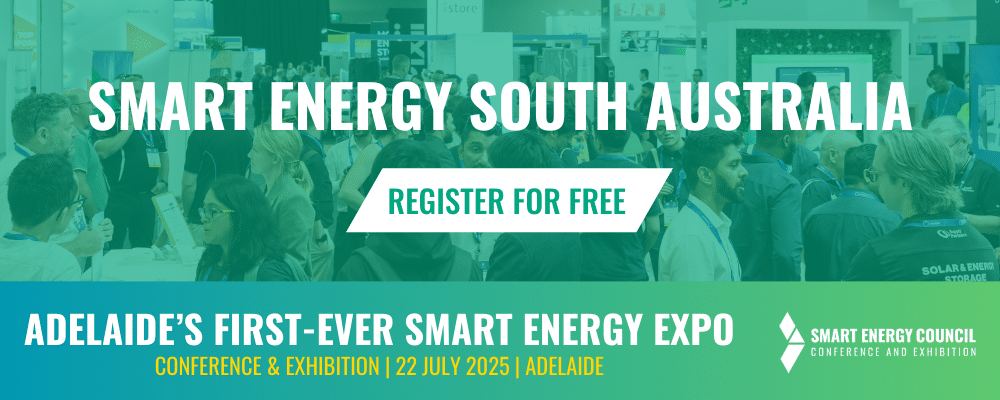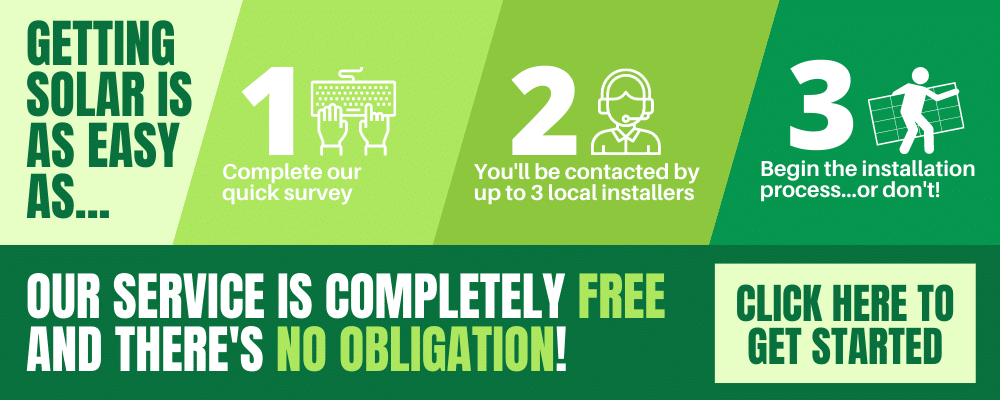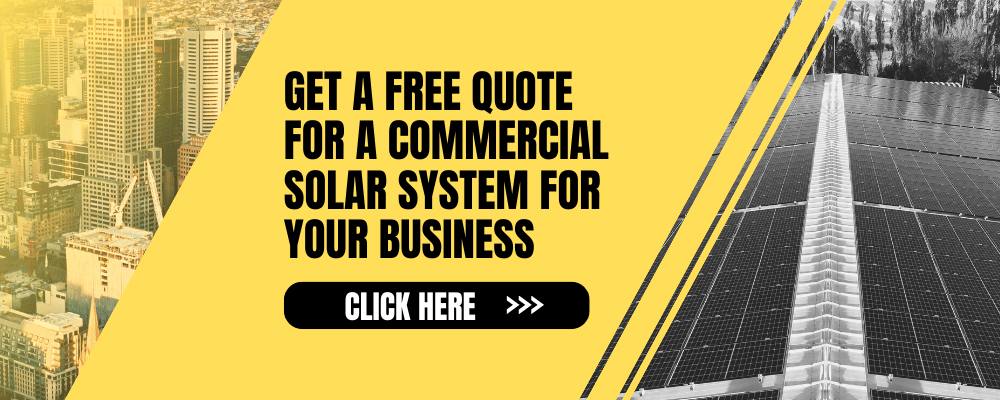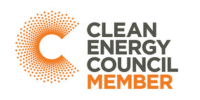On This Page
It’s been a volatile year for the energy market, and households in NSW are among the hardest hit with the Australian Energy Regulator (AER) announcing benchmark electricity prices will be rising between 8.5 per cent and 18.3 per cent. Gas prices have also hit the roof due to a surge in demand and a shortage of supply.
While higher energy bills may be inevitable, the chair of the AER has reminded customers that the benchmark price isn’t necessarily the cheapest and urged consumers to shop around for better deals.

Well before the increase was announced, Australians have always had plenty of reasons to shop around for a new energy provider. Most states have what’s called a deregulated market which allows energy retailers to set their own prices and compete for market share. The result? Retailers are incentivised to offer lower prices and better services.
A deregulated market also gives customers the freedom to switch and choose the right electricity provider and plan for their needs, whether that’s the cheapest option, or one with the best service or greener credentials.
Avoiding 'Bill-Shock' and the 'Lazy Tax'
We’ve all had that awful, sinking feeling where we receive a bill only to find it’s far higher than we expected. This “bill-shock”, while common, is usually the result of service providers capitalising on inattention and inertia to increase prices for existing customers – particularly for those on a direct debit arrangement.
Oftentimes you’ll sign up on a great energy deal only to find a year or so down the track that the deal is no longer competitive or that the discount has been removed entirely. You’ve been hit with the “lazy tax”.
The “lazy tax” (or the “loyalty penalty”) is simply the premium price you pay for not regularly shopping around and swapping power companies for a better energy deal.
We’ve been taught to believe that businesses reward loyalty – but when it comes to your gas and electricity providers, this couldn’t be further from the truth. In fact, you’re likely paying hundreds of dollars a year more than you need to by not switching providers and taking advantage of competition in the market. The same principle applies to insurance brokers, telecommunications providers and almost all set-and-forget subscription services.
We get it – it’s a hassle to constantly shop around for energy providers. Life gets in the way, and energy companies know this. The question is, can you afford to ignore the issue?
It’s important to remember that you have the power to switch at any time.
It doesn’t matter how long you’ve been with your current provider, or if you’re on a fixed-term contract – you can always switch providers if you find a better deal.
Read more:
NSW electricity and gas distributors and retailers
In NSW, you have three electricity distributors – Ausgrid, Endeavour Energy and Essential Energy – and each are responsible for a particular region (network) of the state.
There are also three gas distributors – Central Ranges System, Jemena Gas Networks (NSW) and the Wagga Wagga Gas Distribution Network (Evoenergy serves some customers in Palerang (Bungendore) and Queanbeyan).
NSW customers have a choice of over 30 electricity and gas providers, each competing for your business. So if you’re fed up with your current energy bill, or just want to ensure you’re not overpaying – it’s worth your while to compare electricity providers and plans, and make the switch to a better deal.
How to switch energy providers in 8 easy steps
Although many households may consider switching energy companies at some point, there’s usually a bit of confusion around how long the process takes, as well as if any fees are involved.
Consider your energy consumption habits: The first step is to understand your energy consumption habits as this will give you a good idea of the type of plan that would best suit your needs. You can check your past energy bills to get an accurate idea or use an electricity usage calculator.
Compare deals in your local area: Find out which plans are the most competitive in your postcode. Consider the overall value, including energy rates, discounts, feed-in tariffs, value-adds and other incentives like customer reward programs. Make sure you double-check your existing plan to see if there are any exit or cancellation fees and factor that in to your comparison.
Switch energy providers: Choose your preferred energy retailer based on your personal circumstances by using our free comparison tool. All you need to get started is your postcode and a recent energy bill.
Receive a welcome pack from your new provider and expect your current provider to be in touch: You should receive a welcome pack from your new provider either in the mail or online asking for payment information and account details. At the same time, your old provider will more than likely be in touch to attempt to keep you as a customer – this could actually nab you a great deal, so it could be worth hearing them out.
A final meter reading will take place by your old provider : Your current provider will will carry out a meter reading to arrange a final bill. The will send you this final bill either in the mail or online, including any exit fees that may apply. Once this is paid, your account with them should be closed. This process should only take around two business days to complete.
Your new energy provider will be in touch : Once your account has been taken over by your new electricity provider, you’ll be notified and your next bill will be from them.
Activate any special features of your plan:You’ll be able to access your account and turn on any features including customer rewards programs
Compare every six months: Remember to regularly compare your options as energy plans and pricing are constantly changing. We recommend comparing every six months to make sure you’re always on the best deal possible.
What to consider before switching energy providers
When considering whether or not to sign up for a new energy provider, do some research and decide which features are most important to you. Here are several things to look for:
Usage charges: The amount you pay for each unit of electricity or gas used at your home. Usage rates are calculated in cents per kilowatt hour (kWh) for electricity and cents per megajoule (MJ) for gas, and vary substantially between providers.
Supply charges: The rate at which electricity or gas is supplied to your home. Supply fees are usually between 80c and $1.20 per day, but they depend on the energy supplier and where you live.
Hidden fees: Fees for connection, disconnection, and contract termination are usually hidden in the fine print of your energy plan. Ensure you’re aware of any additional costs before signing up to a new plan.
Discounts/incentives: Many electricity and gas providers offer discounts, bill credits and special offers, but only if you meet certain conditions. Check the details of each offer carefully, as you may be paying higher rates in other areas (i.e. usage and supply charges).
Customer service: If you have a problem with your energy supply or plan, it’s important to be able to contact your provider quickly and easily. Check customer reviews and compare customer satisfaction ratings before signing up to a new plan.
Green credentials: you can make a conscious decision to buy from a retailer that is making strides in investing in renewable energy sources and phasing out fossil fuels. The Green Electricity Guide Report 2022 is a fully independent assessment of Australia’s electricity retailers to inform consumers about their options for greener power.
5 tips to get a better deal
We’ve compiled the most helpful tips for comparing and switching gas and electricity plans in Australia so that you can find the best deal:
- Pay attention to renewal notices: The best time to shop around is when your contract is up for renewal. Whether it’s with your existing provider or a new one, you’ll often have access to deals far superior to the one you’re currently getting.
- Negotiate, negotiate, negotiate: Maybe you like your current provider. The reason why people stay with their provider doesn’t always come down to them offering the best deal. Perhaps they like the fact it’s an Australian-owned company or maybe the customer service is excellent. It still doesn’t mean you should be paying more than the next customer. In this case, the best thing you can do is compare your current rate with other providers, and, armed with these prices, go back to your existing provider and negotiate a better deal. If they don’t budge, then you can always…
- Threaten to leave: All energy providers have a retention department. This department is in charge of persuading people to stay with the company and their primary goal is to reduce cancellations. At this point of the conversation, you will have the most leverage. Your most powerful bargaining chip is quoting prices or discounts from competitors, i.e.: “Energy provider X is offering me the same service but for X amount less. If you can’t match that then you’re incentivising me to leave.” As we said, powerful stuff. If your service provider won’t come to the party or you’re feeling jaded at this point, then maybe you should…
- Actually leave: Remember, new customers usually get the best deals. While companies want to keep their existing customers, they also want to poach customers from other providers, and so provide attractive incentives to make the switch. Sometimes you’ll even find that your previous provider backflips and offers you an even better deal to return. If you do decide to leave, first find out if there are any cancellation fees before signing up for a new plan.
- Let us do the shopping around for you: Why not leave the stress behind and let us do the footwork for you – complete our quick energy comparator quiz and we’ll show you what you can be saving and help you make the switch in a few quick steps. Arm yourself with a recent energy bill and use our FREE energy comparator today!
Solar customers: New South Wales feed-In tariffs
A solar feed-in tariff or FiT refers to how much you are paid per kWh of electricity when you export excess energy from your solar installation to the grid. Each energy retailer in NSW offers their own tariff, which means the amount you receive for solar PV electricity can vary considerably depending on your provider.
There is no set minimum feed-in tariff rate in NSW, although there is a benchmark range of 4.6 to 5.5c/kWh, according to Energy NSW.
Remember, a good solar feed-in tariff is important, but to find the best deal you also need to value usage rates and supply charges.
Top 3 feed-in tariff rates NSW
| Retailers | Min Solar FiT | Max Solar FiT |
|---|---|---|
| GloBird Energy | 3.0c | 20.0c (first 14kWh/day, 5c thereafter) |
| Red Energy | 6.0c | 18.0c (first 5kWh/day, 6c thereafter) |
| Nectr | 0.0c | 15.0c (first 10kWh/day) |
Feed-in tariff rates for major NSW retailers
| NSW Major Retailers | Min Solar FiT | Max Solar FiT |
|---|---|---|
| Origin | 2.0c | 10.0c (first 14kWh/day, 5c thereafter) |
| EnergyAustralia | 7.6c | 10.0c |
| AGL | 5.0c | 10.0c |
| Red Energy | 6.0c | 18.0c (first 5kWh/day, 6c thereafter) |
| Alinta Energy | 6.7c | 6.7c |
| Simply Energy | 5.5c | 5.5c |
| Powershop | 0.0c | 13.0c |
| Dodo | 7.0c | 7.0c |
*Feed-in tariffs are for residential customers on a single rate tariff in Sydney on the Ausgrid network. Accurate as of May 29 2022










































